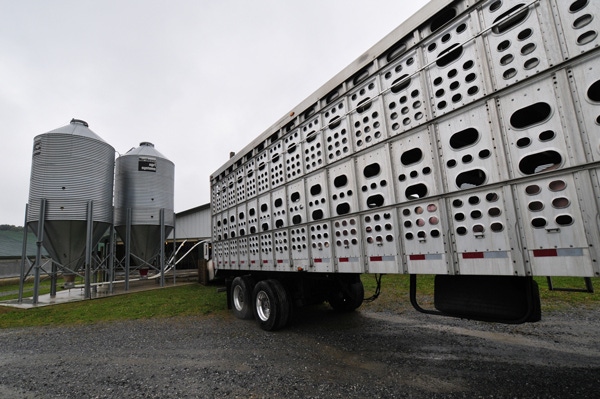You'd think more bedding is always warmer and more comfortable for hogs, but new Pork Checkoff-funded research has shown that this isn't true in any season – including winter.
January 25, 2013

You'd think more bedding is always warmer and more comfortable for hogs, but new Pork Checkoff-funded research has shown that this isn't true in any season – including winter.
“In cold weather, there's no added benefit to using more than six bales of bedding per trailer,” says John McGlone, a swine researcher at Texas Tech University and principal researcher for the study.
McGlone and Anna Butters-Johnson, an Iowa State University researcher, looked at various rates of bedding in semi-trailers at different times of year and in different locations throughout the Midwest. Their research shows that it's possible for producers to reduce the amount of bedding used during transport year-round. With that comes the added bonus of significant cost savings to the industry – an estimated $10.1 million annually.
“The bedding research is a win-win, because it shows that we can continue to improve animal well-being practices and actually save money at the same time,” says Karen Richter, a pork producer from Montgomery, MN, and National Pork Board vice president.
Minimal Problems
“Overall, the pork industry is doing a good job of transporting roughly two million pigs per week in a safe, humane way,” says Sherrie Niekamp, swine welfare director for the National Pork Board. “Statistics back this up, with fewer than 0.7% of pigs sent to market having a negative well-being experience, which could be anything from temporary fatigue to mortality.”
Pigs are sensitive to temperature extremes, however, and this leads to stress that can quickly elevate to a negative well-being experience if steps to alleviate the condition aren't taken immediately, McGlone says. Too much bedding can be more of a hindrance than a help as the mercury drops, he adds. Cold temperatures cause wet bedding to freeze, making pigs more likely to slip on the ice, thereby causing more downed pigs.
“Obviously, the ice can lead to more injuries, but the real problem with the ice is that it makes the pigs cold, which increases their risk of them going down, says McGlone, who encourages producers to evaluate their bedding practices and determine if they can implement the study's protocols. “There is no advantage in using more bedding than necessary.”
For more information, contact Sherrie Niekamp at [email protected]or at (515) 223-3533 or see the winter issue of Pork Checkoff Report.
You May Also Like



